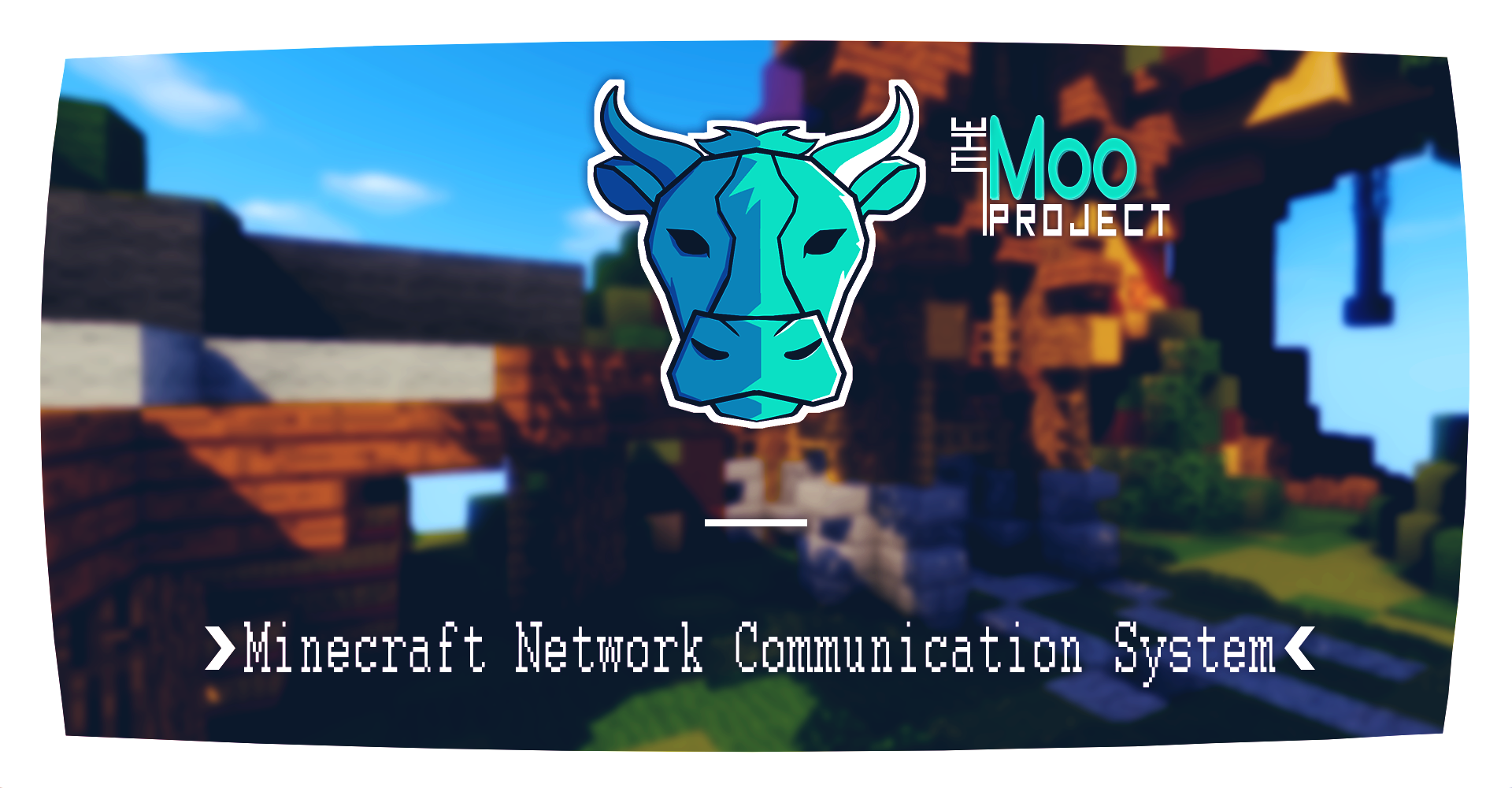Logo made by Karumata | Banner mady by Slickz
MooProject
A minecraft network communication system based on Netty (Some call it 'Cloud system', which is not quite correct).
This project was originally written for a minecraft network, but after it went down I decided to share it on Github. So use this on your own responsibility.
If you find any flaws feel free to open up an Issue or a Pull Request
It is recommended to setup this Cloud on an Unix system
Getting started
- Download the .sh files from the /scripts folder (
Raw->Rightlick->Save site) and save them inside a folder where you want the program to be installed (e.g.:/home/minecraft/). - Run install_requirements.sh to install Redis and MongoDB (you can skip this step if you've already installed them or if you want to install them yourself).
- Run setup_cloud.sh to create the
/cloudfolder and to download the files from Jenkins. (Note: This step is not supported anymore, therefore you have to compile the source yourself.) - Put the start_cloud.sh into the
/cloudfolder and run the script to start the cloud once - It'll fail but now you're able to configure the MongoDB connection inside the/cloud/configuration/config.yml.
It could now look like this:
{
"debug": false,
"redis-config": "redis_config.json",
"max-ram-usage": 60,
"netty": {
"host": "localhost",
"port": 8000,
"whitelist": {
"activated": true,
"ips": [
"127.0.0.1"
]
}
},
"database": {
"hostname": "localhost",
"database": "dbName",
"port": 27017,
"user": "user",
"password": "password"
}
}- For configuring the Redis connection go to
redis_config.json
For further informations about theredis_config.jsonvisit the Redisson Wiki - If the configuration is correct the Cloud should be able to start successfully now.
Setting up Thunder
Thunder is the bungee part of the cloud, so setting it up is fairly simple.
- Download the bungee file from the md-5 Jenkins server and put it inside a folder of your choice (e.g.:
/home/minecraft/bungee/). - Create the
start.shto start the bungee and put it into the same folder as the Bungeecord jar. It could look like this:
#!/bin/sh
screen -S bungeecord -dm java -jar -Xmx1024M yourBungeecordFile.jar- Start the bungeecord once to create the folders and files.
- Put the
/cloud/jars/thunder.jarinto the/pluginsfolder. - Now start the bungee again and edit the
/plugins/Thunder/config.jsonto set the instance name, cloud-ip and cloud-port (If no changes needed leave it as it is). If you want to edit the Redis config, you can do it with the same file as the cloud (redis_config.json). - Done.
Setting up Daemons
A daemon is in this setup a program which runs in the background and manages the server dynamically.
It's basically the same setup as Thunder but instead of downloading the bungeecord jar get the /cloud/jars/daemon.jar and put it inside a folder of your choice and instead of creating a script take the start_daemon.sh script. Start the daemon and configure it just like the you did with the Thunder configuration files.
Setting up patterns
A pattern is a pre-defined server folder which will be used to start multiple servers of one instance. It is recommended to use something like RSync (Thanks @Doppelnull) to synchronize data between the servers. Creating a pattern:
- Use
/pattern create <...>inside the Cloud console. - After creation in the database go to a daemon and inside the
patterns/nameOfYourCreatedPatternput all your server files (You know how to obtain them hopefully) inside there (plugins, worlds, server.jar, start.sh, ...). Finish it up by putting thecloud/jars/lightning.jarinside the plugins folder as well.
For different pattern management (deletion, ..) use/patterninside the cloud console, you'll get sub commands as help.



